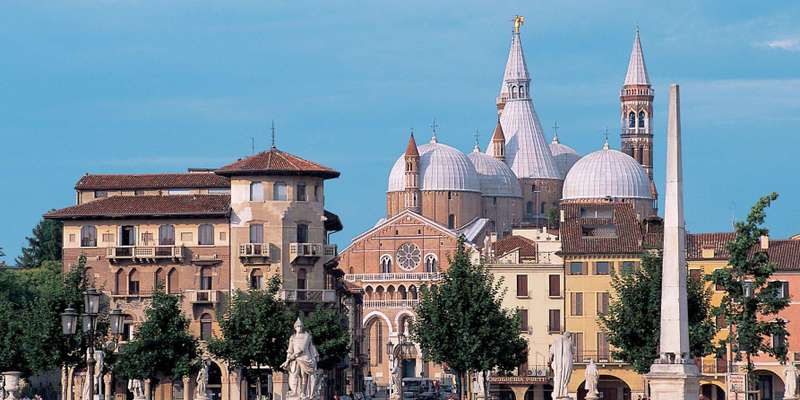- Home
- Useful Tips
- Padua's connection to...
Few travelers realize Padua's pivotal role in shaping modern medicine during the Renaissance. While crowds flock to Venice's canals, this scholarly city quietly preserves groundbreaking medical sites where pioneers like Vesalius challenged medieval dogma. The frustration comes when visitors miss these treasures – either unaware of their significance or deterred by confusing opening hours. Over 60% of day-trippers from Venice bypass Padua's medical landmarks completely, according to regional tourism data, leaving without witnessing the world's first permanent anatomy theater or medicinal plant gardens that changed healthcare forever. For history enthusiasts, this oversight means missing tangible connections to figures like Galileo and William Harvey, who taught where you can literally walk in their footsteps. The deeper challenge lies in separating must-see sites from lesser attractions when time is limited, especially with many locations requiring advance research for optimal visiting conditions.


Navigating the world's first anatomy theater without the crowds
The Teatro Anatomico at Palazzo Bo represents medical history's turning point, where public dissections moved from shadowy rumors to sanctioned science. Built in 1594, this walnut-wood amphitheater still induces awe with its telescoping dissection table and tiered seating where students observed by candlelight. Most visitors arrive mid-morning with Venice tour groups, creating frustrating bottlenecks in the narrow passage. Instead, target weekday openings at 3 PM when academic tours conclude. The university's volunteer guides – often medical students themselves – share grisly details most skip, like how professors used perfumed herbs to mask odors during day-long dissections. For independent exploration, download the university's augmented reality app before visiting; it reconstructs 16th-century demonstrations when you point your phone at specific architectural features. Budget-conscious travelers can join the free first-Sunday-of-the-month access, though these slots fill weeks ahead during peak season.
Decoding the Botanical Garden's medicinal plant secrets
UNESCO-listed Orto Botanico di Padova hides its revolutionary purpose behind serene greenery. Founded in 1545 to grow 'simples' (medicinal plants), its concentric layout was designed for pharmacology students to compare species. Today, over 6,000 plants thrive here, including descendants of the original medicinal specimens. The challenge lies in appreciating their historical context beyond their beauty. Local herbalists lead Wednesday morning workshops demonstrating Renaissance preparation techniques – crushing mandrake roots with period tools or distilling lavender oils as 16th-century apothecaries did. For self-guided visits, the numbered plant beds correspond to an audio guide (available at the ticket office) that explains which species treated everything from plague to melancholy. Don't miss the poisonous plant collection behind protective grating; its nightshades and hemlocks were crucial for medical training. Evening visits in summer offer special access to the ancient ginkgo tree, whose leaves were used to treat circulatory disorders.
Finding accommodation near Padua's medical quarter
Staying within walking distance of Via San Francesco saves precious time when exploring Padua's medical heritage. The area between the Scrovegni Chapel and university forms the historic 'scholars' district,' where Renaissance medics lived and debated. Several converted 15th-century palazzos now operate as boutique hotels, their vaulted ceilings and stone staircases intact. For budget travelers, ecclesiastical guesthouses like Casa del Pellegrino retain monastic simplicity at student-friendly rates. A key advantage of these locations is early access; many open courtyards and loggias for morning espresso before official sites open, letting you admire Galileo's lecture podium or Fabricius' surgical instrument collection without jostling crowds. Those preferring modern amenities should look south toward Prato della Valle, where four-star hotels frequently offer package deals with skip-the-line garden tickets. Wherever you stay, request rooms facing interior courtyards – street-facing lodgings battle nighttime revelry from university taverns.
Uncovering hidden medical artifacts most tours miss
Padua's lesser-known medical collections reveal intimate details of Renaissance practice. The Museo di Storia della Medicina houses terrifyingly beautiful surgical saws and a unique 'wound man' diagram used for diagnosis training. Its basement level reconstructs an alchemist's workshop with glass distillation vessels identical to those Paracelsus used. Few think to visit the Specola, the university's former observatory, where medical astrology charts decorate the ceilings. For a macabre detour, the Church of San Francesco holds the dissected nervous system of early anatomist Giovanni Battista Morgagni. These sites rarely appear on group itineraries, meaning you'll often have them to yourself. The catch? Scattered locations require strategic planning. A local tip is to follow the 'medicina' pavement markers – brass inlays connecting key sites via the shortest route. PaduaCard holders get free entry to most, but verify opening days as many close for academic events. True enthusiasts can request special access to the university's historical archive, containing 500-year-old student notes with doodles in the margins.



